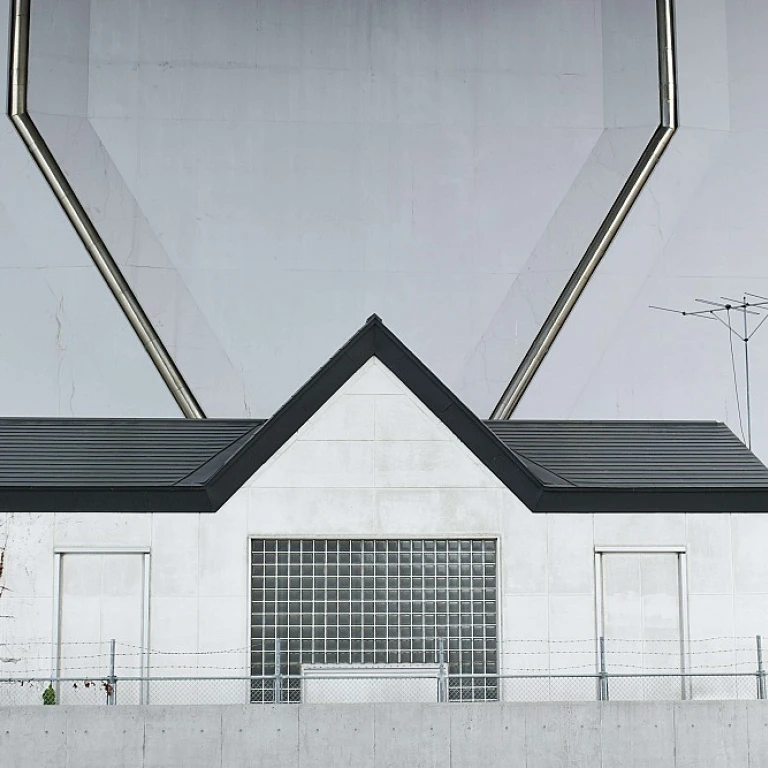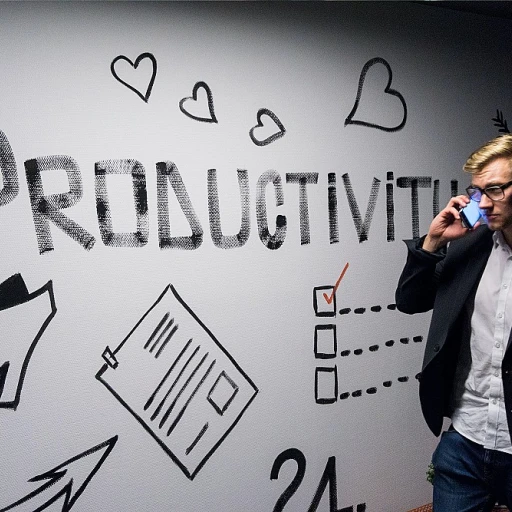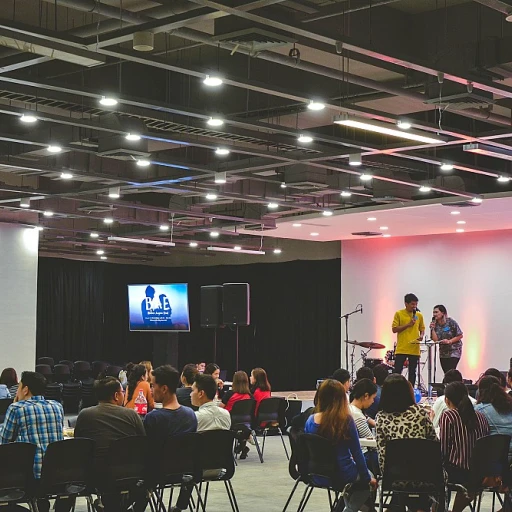
Understanding Economic Management in Design
Grasping the Fundamentals of Economic Management in Design
Economic management in design is not just about juggling numbers; it’s about strategically aligning resources and creativity to maximize output and minimize waste. It involves a comprehensive understanding of how each financial decision impacts your design processes and ultimately the business's bottom line.
Effective economic management offers a foundation for innovation and long-term sustainability. It requires a deep dive into the economic facets that can influence design projects, like resource allocation, budget constraints, and technology adoption. These elements play a pivotal role in ensuring that your department’s design initiatives are cost-effective while maintaining high standards of quality and creativity.
The economic challenges faced by design departments are multifaceted and often require creative solutions. To tackle these challenges, one must comprehend the intrinsic relationship between design and economic strategies. By doing so, there’s an opportunity to not only meet but also exceed project expectations without overspending.
Integrating intelligent economic management practices can transform your design department into a well-oiled machine, capable of innovating while staying within budgetary constraints. This balance is crucial for fostering creativity and achieving sustainable growth.
Explore the advantages of strategic design management by leveraging a comprehensive approach to product design. The insights you gain can shed light on enhancing your department’s economic performance, creating a ripple effect of efficiency and innovation across your projects.
Identifying Key Economic Challenges in Design
Overcoming Economic Hurdles in Design Departments
When delving into the realm of economic management within design, it's crucial to first acknowledge the significant challenges that arise. Design departments often face hurdles such as unrealistic budget expectations, rapid technological changes, and limited resources. Recognizing these issues is the first step toward effective economic management. One of the primary challenges is dealing with "{{ product_part }}" that may not align perfectly with budget constraints. Ensuring that quality is not sacrificed when adapting to economic limits is a delicate balancing act. Moreover, as trends in {{ keywords }} evolve at a rapid pace, design teams may struggle to allocate funds effectively to adopt new technologies efficiently. Another aspect that often presents difficulties is the alignment of design goals with overall organizational objectives. Economic constraints can sometimes lead to creative compromises which, in turn, might affect the end product's market performance. This tightrope walk requires strategic thinking and coordination across departments. Additionally, the design industry is not immune to global economic shifts. External factors, such as market fluctuations and consumer trends, significantly impact profitability and budget allocations in design settings. To gain further insights on how these challenges can be addressed through innovative strategies, consider exploring mass customization in design and its impacts on economic efficiency within design departments. This exploration can provide valuable perspectives on overcoming financial obstacles by tailoring design processes to unique consumer needs. Addressing these economic challenges is not just about survival, but about thriving in a competitive market, where creativity must meet fiscal responsibility.Strategies for Effective Budgeting
Mastering the Art of Financial Planning in Design
Effective budgeting in design departments goes beyond mere number crunching; it's about strategically aligning your fiscal resources with your creative objectives. Here’s a rundown of approaches that can ensure your department thrives even in a financially constrained environment.
- Forecasting Demand: A thorough understanding of market trends and consumer needs can guide budget allocation smartly. Track these elements by using data analytics, which provides valuable insights into upcoming design projects.
- Cost Analysis: Conducting regular cost analyses helps uncover areas of wastage and highlights opportunities for financial efficiency. This practice should be revisited frequently to adapt to evolving economic scenarios.
- Prioritization: Not all projects will have an immediate return on investment (ROI). It is crucial to prioritize projects that are aligned with long-term brand goals and immediate financial potential.
Exploring the role of technology can serve as a catalyst for economic efficiency. Enhancing the budget strategy with modern tools such as artificial intelligence in design can streamline processes, reduce overhead, and increase output quality, ultimately ensuring that every dollar spent contributes effectively towards growth.
Resource Allocation and Optimization
Maximizing Resources Through Smarter Allocation
In the domain of design, optimal resource allocation is a fundamental aspect of economic management. Efficient management entails using available human, material, and technological resources strategically to maximize output without incurring unnecessary expenses. However, economic challenges often arise when resources are misallocated, leading to project delays and cost overruns.
To begin with, assessing resource requirements accurately is imperative. This involves:
- Conducting a thorough evaluation of current and upcoming project demands.
- Aligning human resources with specific project needs based on expertise and availability.
- Minimizing redundancies by ensuring team members aren't overextended across multiple projects.
Once needs are clearly defined, implementing a cross-functional team approach can facilitate efficient resource allocation. It enables sharing skills and knowledge across departments, enhancing the overall output.
In addition, integrating tools like project management software helps in more effective monitoring of resources. Such platforms offer real-time insights, aiding managers in tracking resource utilization and making informed adjustments. Streamlining this process ensures that human and material resources are employed where they provide the most significant impact.
Ultimately, understanding the value of resources within the financial scope of a project is crucial. It's about being proactive in identifying areas where cost savings can be achieved without compromising the quality of design output. By embracing a culture of continuous improvement and mindful resource management, design departments can significantly enhance their economic efficiency.
Leveraging Technology for Economic Efficiency
Maximizing Technological Tools for Efficient Design Management
In the rapidly evolving world of design, the integration of technology is no longer a choice but a necessity. To achieve economic efficiency, leveraging technology can transform the way design departments operate, making them not only faster but also smarter. Here are a few ways technology can be a game-changer in design economic management:- Automation of Administrative Tasks: Implementing software solutions to automate routine tasks such as tracking budgets, managing invoices, and scheduling meetings can significantly reduce overhead costs. This automation allows designers to focus more on creative work rather than administrative duties.
- Collaboration Platforms: Utilizing digital collaboration tools can streamline communication within the design team and with other departments. Platforms that offer real-time sharing of ideas, files, and feedback can enhance productivity and reduce the time spent on project iterations.
- Advanced Design Software: Investing in the latest design software can save time and reduce errors in the design process. Features like real-time rendering, cloud-based storage, and AI-driven analytics can be invaluable for a design team looking to optimize its output.
- Analytics and Reporting Tools: Data-driven decision-making is crucial for a thriving design department. Tools that provide insights into project performance, client feedback, and market trends can help in making informed economic decisions. Such insights are invaluable when working on budget forecasts and resource planning.
Case Studies: Successful Economic Management in Design
Real-World Examples of Economic Management in Design
In the ever-evolving world of design, economic management is crucial for ensuring sustainability and growth. Let's delve into some real-world examples where strategic economic management has made a significant impact.
Case Study 1: Infrastructure Investment for Long-Term Value
One design firm focused on enhancing its infrastructure to optimize resource allocation. By investing in cutting-edge technology and sustainable practices, they were able to reduce costs and improve efficiency. This strategic move not only optimized their budget but also ensured a durable impact on their financial health.
Case Study 2: Leveraging Technology for Financial Efficiency
Another company successfully integrated advanced software solutions to streamline their design processes. This technological shift allowed them to allocate resources more effectively and manage their funds with precision. The result was a significant reduction in operational costs, proving that technology can be a powerful ally in economic management.
Case Study 3: Public Engagement and Value Creation
In a different scenario, a design department focused on engaging the public to create value. By involving stakeholders in the design process, they were able to align their projects with public needs, ensuring that their initiatives were both impactful and financially viable. This approach not only enhanced their public image but also secured additional funding for future projects.
These examples highlight the importance of strategic planning and resource optimization in design. By understanding the key economic challenges and implementing effective budgeting strategies, design departments can ensure their long-term success and sustainability.















